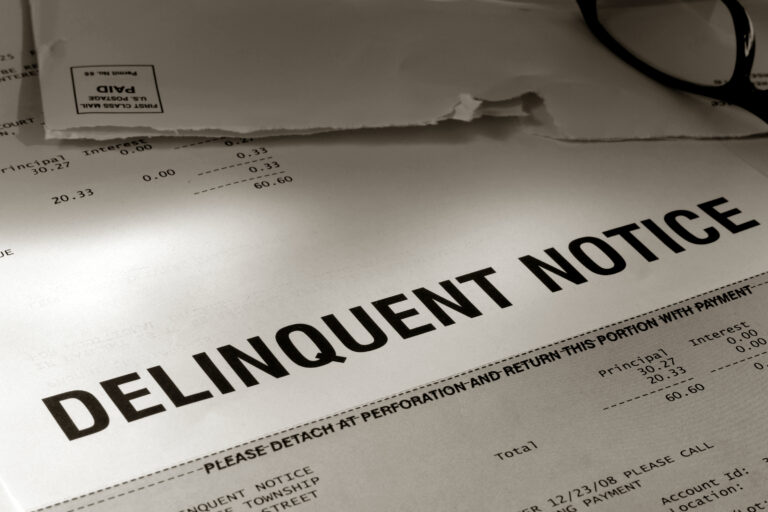Money is often fickle. Whether considering our businesses or our personal lives, cash flows into and out of our accounts like the tides. And in its simplest form, accounts receivable (A/R) and accounts payable (A/P) help businesses track inward and outward movement, respectively.
Admittedly, neither accounts payable nor accounts receivable are needed in simpler, cash-focused organizations where nearly all transactions are completed at the same moment funds are exchanged. Consider nearly any cash purchase you might make at a brick-and-mortar store — as soon as you hand over the appropriate currency, the items you’ve brought to the check-out counter are now yours. You’ve instantly converted your money into a hard asset.
But as soon as credit-based transactions are introduced — and there is now a delay between purchase and payment — it becomes wise to embrace an accrual accounting strategy where accounts payable and receivable become necessities. These accounting categories on your general ledger enable you or your staff to accurately determine your true financial standing, taking into consideration the cash and assets you have in hand and any funds that you might owe or that might be owed to you.
What is accounts payable (AP)?
In simple terms, accounts payable is the accounting classification and related activities related to any bills or invoices your business has not yet paid — particularly those that will come due soon. These outstanding debts typically reflect purchases made on credit from suppliers or other vendors.
So whenever your business receives an invoice, this incoming charge is recorded on your balance sheet as a short-term liability. You’d also note the total in your general ledger as a credit to the accounts payable category. And to comply with double-entry bookkeeping, you would also debit the same amount to a corresponding expense account. Once you’ve paid the outstanding debt, your business would then debit your accounts payable category and apply an offset credit to your cash account, reducing your overall cash balance.
For this reason, some businesses will hold off making payments until just before the due date to keep a larger pool of cash in hand.
Common issues unique to accounts payable
Data capture
No two invoices are the same. Just look at all of the bills that you personally pay each month. They don’t share due dates. The total you owe might be at the top of the document or all of the way at the bottom. The method you receive them through can also be varied, with some invoices coming through traditional snail mail while others show up in your inbox.
Unfortunately, for accounts payable, you need to find a way to gather all of this disparate information and put it in a standardized format — ideally, one that can be easily tracked and managed by your back-office systems. And if you’re relying on manual data entry to convert these records into usable information for your enterprise resource planning (ERP) platform, you’ll either be spending additional time verifying and double-checking these entries, or you’ll be placing your business and reputation at risk.
Timing
As previously mentioned, many businesses try to effectively time their payment strategy to maximize available cash in hand. However, pushing this waiting period too far can lead to late payments and corresponding late fees. At the same time, accounting staff will also need to track and consider potential payment incentives, such as discounts for early payment.
Storage
Invoices, purchase orders, receipts, canceled checks, payment authorizations —there is all manner of documentation that you need to hold onto for your accounts payable efforts. And if you’re keeping all of these records as physical documents, you’ll also likely need a hefty amount of floor space available for the requisite filing cabinets and boxes.
Of course, just having these records in your possession isn’t your only consideration. You’ll also need to be able to sort through these files — either physically or electronically — to find the relevant documentation you need for reporting, validating, or auditing efforts.
Fraud
Whenever money is changing hands, the potential for financial malfeasance exists, including invoice fraud. And your accounts payable efforts are no exception, facing risks from both within and without your business. In fact, in a 2022 study, the Association of Certified Fraud Examiners found that 20% of examined fraud cases originated with billing improprieties. And 10% of cases were caused by check and payment tampering. So effective accounts payable demands robust anti-fraud measures.
What is accounts receivable (AR)?
In contrast to accounts payable, accounts receivable is the accounting category that addresses the funds that are owed to your business, typically by your customers. Basically, if you receive an invoice, it’s A/P. If you send an invoice, it’s A/R.
These unpaid debts show up on your balance sheet as a current asset. And since you can use these legally obligated payments as collateral for short-term loans, they can be labeled as liquid assets and be considered part of your organization’s working capital. To track these funds in your general ledger, you would debit your accounts receivable category and make a corresponding credit entry to the appropriate revenue account. And when you finally receive payment, you will then credit accounts receivable and debit your cash account.
For a more comprehensive overview of these issues, please see our article on Common Accounts Payable Challenges and their Solutions.
Common issues with accounts receivable
Delayed payments
With A/P, you have complete control over when you make your payment. But with accounts receivable, your influx of cash is entirely dependent on the whims of your customers. Is the business struggling? Are they facing a cash shortage or holding on to larger-than-average reserves? Did they lose the invoice?
There are myriad reasons why a payment may be running behind, but no matter the cause, your business isn’t getting its money.
Chasing
Often, these outstanding debts are tracked in 30-day increments, recording which invoices are 30, 60, or 90 days past due. At each of these stages, accounts receivable staff send reminders regarding the still-unpaid bills. These touches might occur via traditional mail, over the phone, via text, or by email. But no matter the channel, these efforts can tie up many employees and personnel hours.
And when an invoice remains unpaid at 90-days past the due date, the debt is typically sent to collections, which demands its own complicated and time-consuming process.
Relationships
No business wants to alienate a satisfied or recurring customer, but ineffective accounts receivable processes and bad vendor relationship management can do just that. An honest oversight could permanently sour a long-standing partnership if conflicting or confusing messages are being sent. Similarly, if these reminders come across as too aggressive — particularly for a customer with a legitimate question or concern about their recent invoice — you risk losing future business.
Risk
Once your company begins extending credit, you immediately add a level of uncertainty to your payment processes. Can this customer afford such a large shipment? How strong are their current finances? What does their payment history look like?
Accurately answering questions like these and effectively weighing their value to determine an appropriate credit risk rating can be quite difficult. Frequently, businesses generate different payment options and conditions to accommodate for these varying risk factors — all of which requires extensive forethought and monitoring.
Accounts payable vs. accounts receivable: Key differences
|
Accounts Payable |
Accounts Receivable |
|
| What is it? | Money you owe | Money owed to you |
| Caused by | Purchasing materials or services on credit | Selling your products or services on credit |
| Relates to | Vendors | Customers |
| Recorded on the balance sheet | As a current liability | As a current asset |
| When resolved | Results in cash outflow | Results in cash inflow |
How automation can help with accounts receivable and accounts payable
If done inefficiently, both your accounts payable and accounts receivable efforts can quickly become costly, time-consuming, and a constant source of frustration. As your company grows — along with the frequency of incoming bills and outgoing invoices — these critical tasks will only grow more complex.
That’s why many businesses have begun automating multiple aspects of their accounts receivable and and accounts payable processes, accelerating these multi-stage and often repetitive tasks. And the actual benefits of this automation routinely extend beyond simpler processes. In fact, we have developed a whitepaper that outlines some of the common benefits delivered from just automating your accounts receivable processes.
But there are many additional advantages to automation of both A/P and A/R, such as:
Streamlined processes
Automation can help establish common, centralized workflows for your financial inflow and outflow. As records come in from both suppliers and customers, you can easily capture this information — commonly through optical character recognition (OCR) technology — and avoid lengthy data entry efforts. Once the details from these records are in your system, much of the handling proceeds without direct human intervention, reducing the likelihood of errors or unnecessary processing delays
Related process automation resources:
Simpler auditing
With all of your payment records stored electronically, searching for details regarding a specific transaction can be reduced to mere seconds. With this information readily available, you can more quickly and easily run reports and mine through the associated metadata to meet auditing requirements.
Productivity boosts
Automation routinely cuts out the most repetitive tasks of an operation. So with automated A/R, your staff won’t need to spend countless hours composing emails or making phone calls just to ensure that your business is actually paid. While automated A/R processes can help reduce the time and resources associated with data capturing and authorizations. Even better, with these monotonous tasks now being handled electronically, you can refocus your staff on more strategic and productive tasks.
Less fraud
With a common, unified process for managing your company’s financials, the opportunities for graft and fraud are greatly reduced. In fact, many platforms boast monitoring tools that can proactively identify data patterns that might indicate malfeasance or that can trigger additional oversight if a common red flag is triggered.
Invoiced: Automated accounts receivable solutions
Getting paid shouldn’t take you more work than the original sale. And any additional effort you need to put into your accounts receivable processes can quickly eat into profits and undermine your overall business. That’s why effective A/R management is critical, and leveraging automation to at least some degree is now a best practice in accounting.
If you want to put your collections and payment efforts in easy mode, consider the Invoiced A/R solution. Our Smart Chasing feature will do the work for you, delivering seamless reminders to outstanding accounts without excessive oversight or relationship risk.
To discover what Invoiced’s automation solutions can do for you, schedule a demo







